Kecak Fire Dance Bali
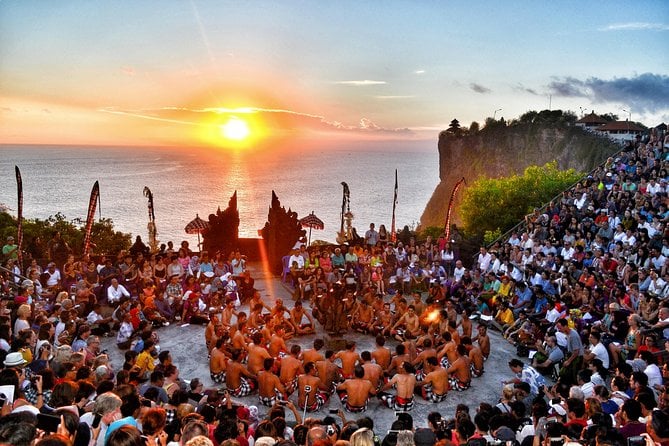
Kecak Fire Dance Bali, Bali known as the “Island of the Gods,” is a place where culture and spirituality are deeply intertwined with everyday life. Among the many traditional art forms that have been preserved and continue to thrive on the island, the Kecak and Fire Dance stands out as one of the most iconic and captivating performances. This powerful dance, set against the backdrop of Bali’s natural beauty, is more than just a spectacle; it is a profound expression of the island’s cultural and religious heritage. In this article, we will explore the origins, significance, and experience of the Kecak and Fire Dance, offering a deeper understanding of this unique Balinese art form.
1. The Origins of Kecak and Fire Dance
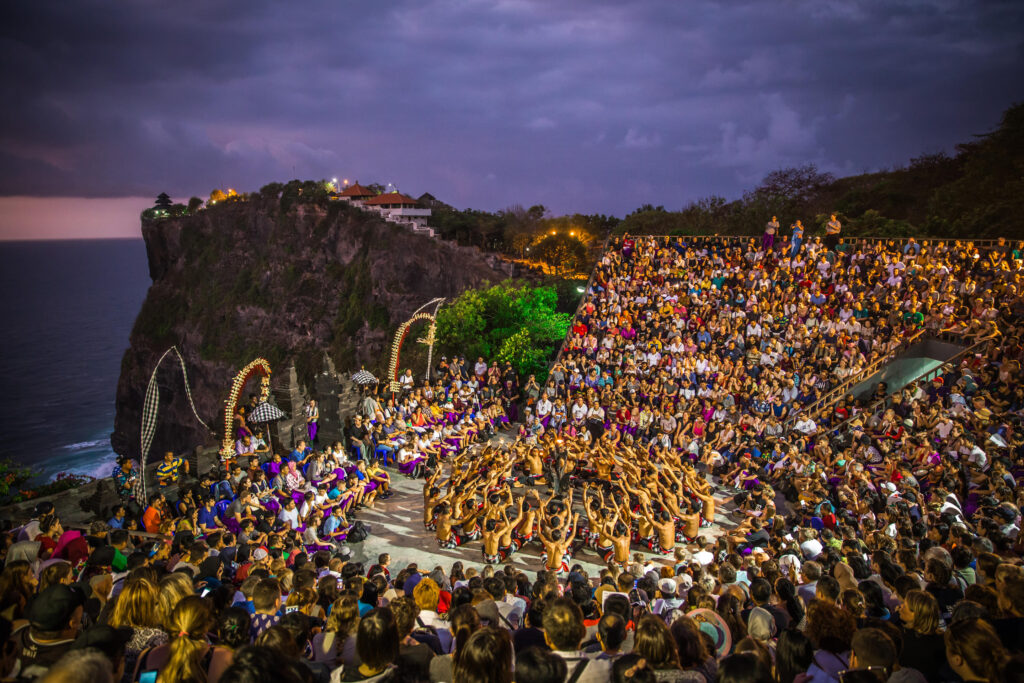
The Kecak dance, often referred to as the “Monkey Chant,” is a Balinese dance and music drama that was developed in the 1930s. It is based on the ancient Hindu epic, the Ramayana, and was originally conceived as a form of entertainment for tourists. However, its roots go much deeper into Balinese culture and spirituality.
The dance was created by Wayan Limbak, a Balinese dancer, and Walter Spies, a German painter and musician who had a profound interest in Balinese culture. Together, they adapted the traditional Sanghyang dance, a trance ritual performed to drive away evil spirits, and combined it with the story of the Ramayana. The result was the Kecak dance, a performance that captures the essence of Balinese spirituality, communal harmony, and artistic expression.
The “Fire Dance” element, which is often performed as part of the Kecak dance, adds an extra layer of drama and intensity to the performance. It involves the use of fire, typically in the form of burning coconut husks, which are kicked and scattered by the performers in a display of fearlessness and spiritual power. This aspect of the performance is deeply symbolic and is believed to protect the dancers from harm while showcasing the triumph of good over evil.
2. The Significance of the Kecak Dance
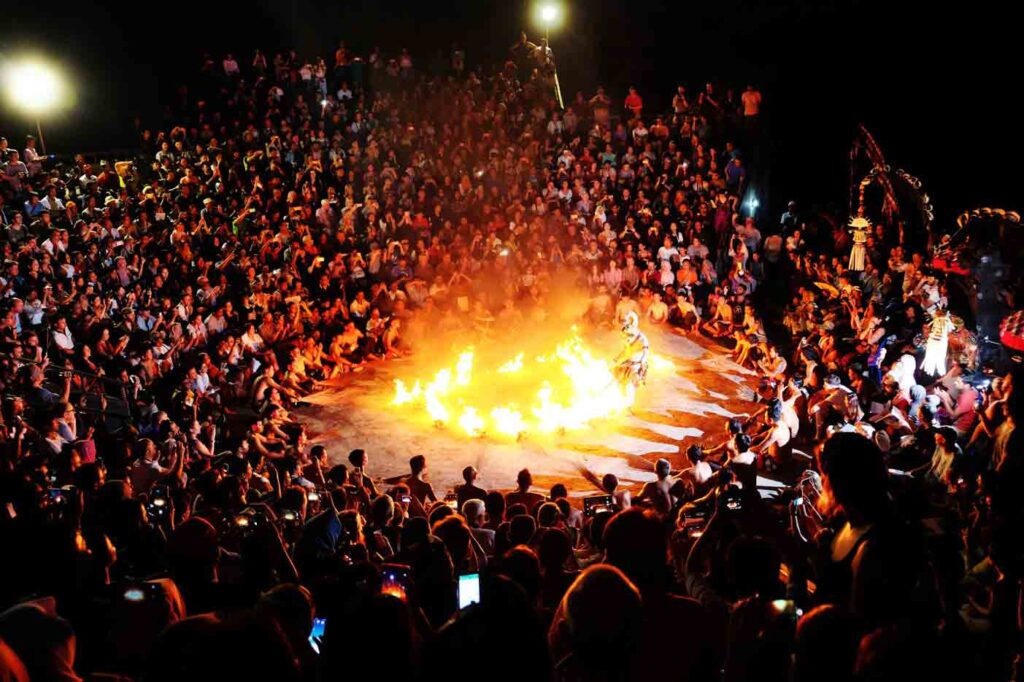
The Kecak dance is not just a form of entertainment; it is a ritualistic performance that carries deep cultural and religious significance. The dance is rooted in Balinese Hinduism, which is the predominant religion on the island. It is an expression of devotion to the gods, particularly to the deity Hanuman, the monkey god who plays a central role in the Ramayana.
In the Ramayana, Hanuman is a loyal devotee of Lord Rama, who helps him rescue his wife, Sita, from the demon king Ravana. The Kecak dance reenacts this epic battle between good and evil, with the chorus of male dancers representing an army of monkeys led by Hanuman. The repetitive chanting of “cak-cak-cak” by the chorus creates a hypnotic rhythm that drives the energy of the performance and evokes a sense of communal unity.
The dance also serves as a form of spiritual protection for the performers and the audience. The use of fire in the dance is symbolic of purification and the destruction of negative forces. It is believed that the dancers enter a trance-like state during the performance, which allows them to connect with the divine and channel spiritual energy.
3. The Experience of the Kecak and Fire Dance
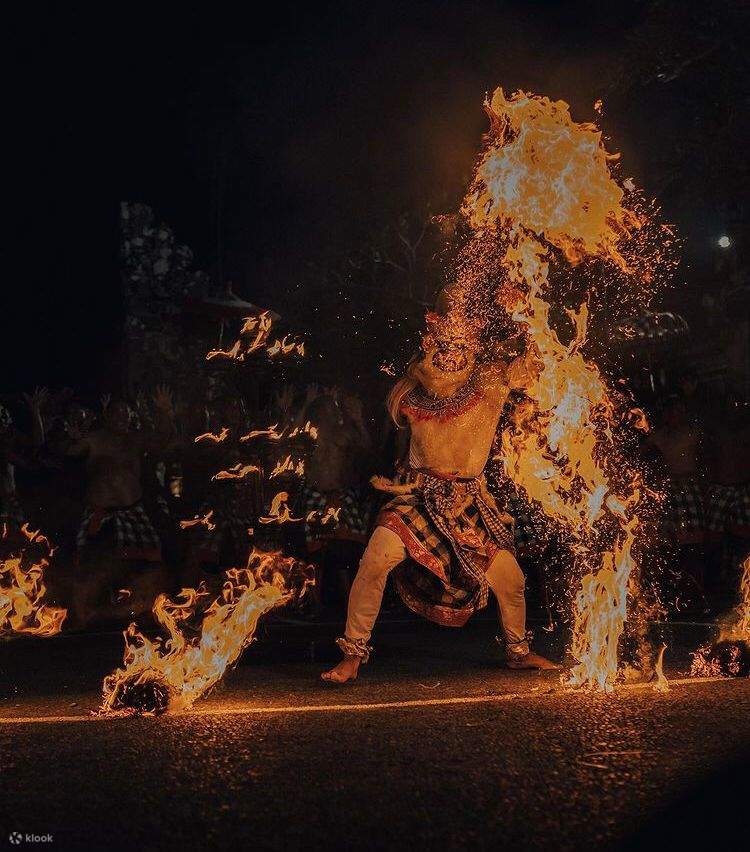
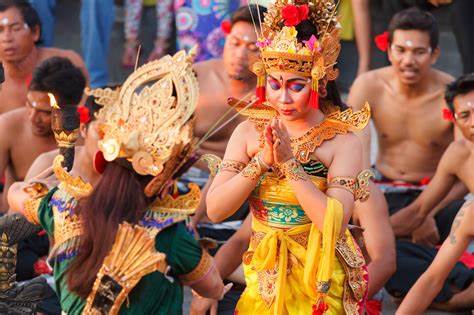
Watching a Kecak and Fire Dance performance is a mesmerizing experience that transports the audience into the heart of Balinese culture. The setting of the performance is often as important as the dance itself. Many Kecak performances take place in open-air venues, with the most famous being at the Uluwatu Temple, perched on the cliffs overlooking the Indian Ocean.
As the sun sets, the stage is set for the performance. The dancers, dressed in traditional Balinese attire, enter the stage with solemnity and grace. The chorus of male dancers forms a circle around the central characters, sitting cross-legged and swaying rhythmically to the chant of “cak-cak-cak.” The chanting grows louder and more intense as the story unfolds, creating an atmosphere of anticipation and excitement.
The central characters of the Ramayana—Rama, Sita, Ravana, and Hanuman—are portrayed by dancers in elaborate costumes, their movements precise and expressive. The dance is characterized by its dynamic and dramatic movements, with each gesture and expression carefully choreographed to convey the emotions and actions of the characters.
The climax of the performance is the Fire Dance, where the character of Hanuman displays his supernatural powers by kicking and scattering burning coconut husks. The flames leap and crackle, illuminating the stage and adding a sense of danger and urgency to the performance. The audience is often left in awe as Hanuman seemingly dances with the fire, unharmed and triumphant.
The performance concludes with the defeat of Ravana and the reunion of Rama and Sita, symbolizing the victory of good over evil. The chanting slowly fades, and the dancers exit the stage, leaving the audience with a sense of spiritual upliftment and cultural enrichment.
4. The Role of Kecak in Balinese Culture Today
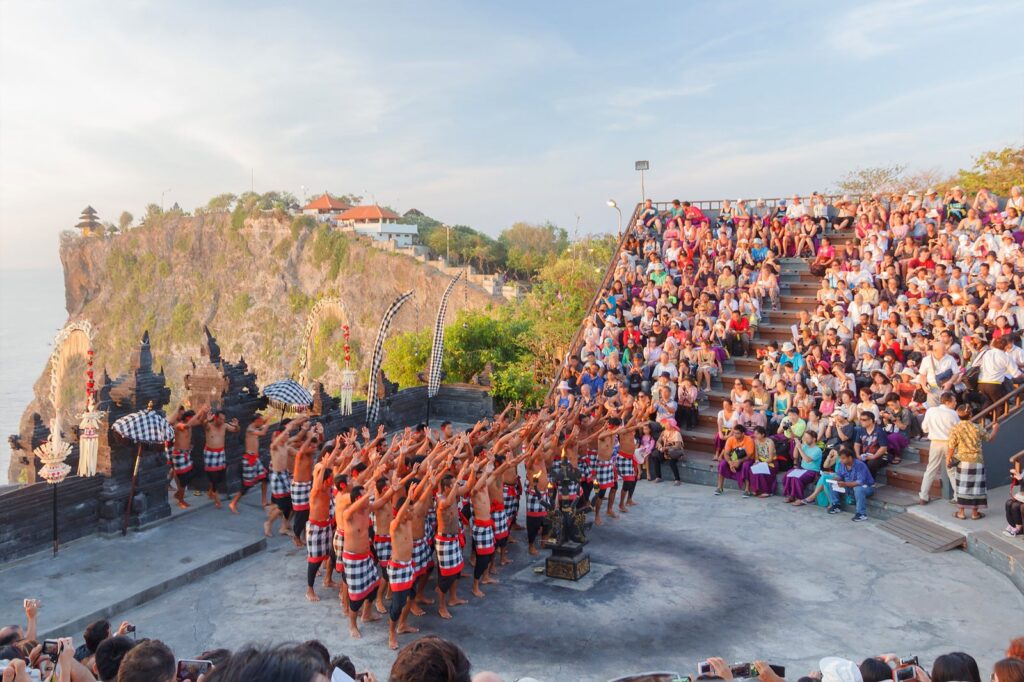
Today, the Kecak and Fire Dance remains one of the most popular and well-preserved forms of traditional Balinese performance art. It is performed regularly at various cultural sites across the island, including Uluwatu Temple, Tanah Lot, and the village of Batubulan. While the dance is often performed for tourists, it continues to hold deep cultural and religious significance for the Balinese people.
For many Balinese, the Kecak dance is a way to connect with their cultural heritage and to pass on traditional values and beliefs to future generations. The dance is taught in schools and community centers, ensuring that the art form continues to thrive. It is also performed during religious ceremonies and festivals, where it serves as an offering to the gods and a means of invoking spiritual protection.
The popularity of the Kecak dance has also led to its adaptation and innovation in contemporary Balinese art. Some modern performances incorporate elements of theater, music, and visual art, creating a fusion of traditional and contemporary styles. These adaptations have helped to keep the Kecak dance relevant and accessible to a wider audience, both in Bali and internationally.
5. How to Experience the Kecak and Fire Dance in Bali
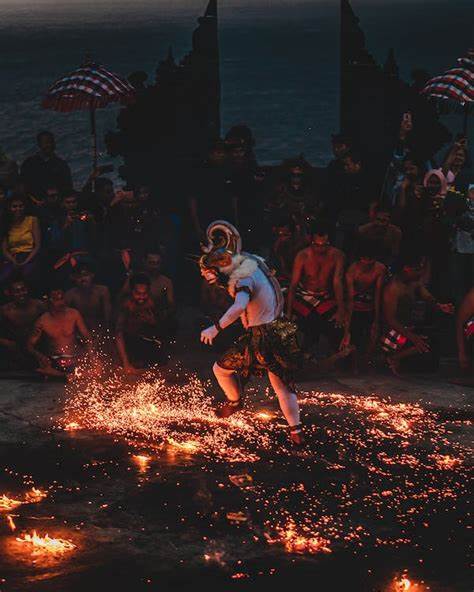
If you’re visiting Bali, experiencing a Kecak and Fire Dance performance should be high on your list of things to do. Here are some of the best places to watch this mesmerizing dance:
- Uluwatu Temple: The Kecak and Fire Dance at Uluwatu Temple is perhaps the most famous and iconic. The performance takes place at sunset, with the temple and the ocean providing a stunning backdrop. The combination of the dance, the setting, and the spiritual atmosphere makes this a truly unforgettable experience.
- Tanah Lot Temple: Another popular location for the Kecak dance is Tanah Lot, one of Bali’s most important sea temples. The performance here is equally captivating, with the temple’s dramatic setting on a rock formation in the sea adding to the mystique of the dance.
- Batubulan Village: For a more intimate experience, you can watch the Kecak dance in the village of Batubulan, near Ubud. The performances here are often less crowded, allowing you to fully immerse yourself in the cultural experience.
- Other Cultural Sites: The Kecak dance is also performed at various other locations across Bali, including hotels, cultural centers, and resorts. These performances are often tailored for tourists, but they still offer a genuine taste of Balinese culture.
6.What to Bring for Watching Kecak?
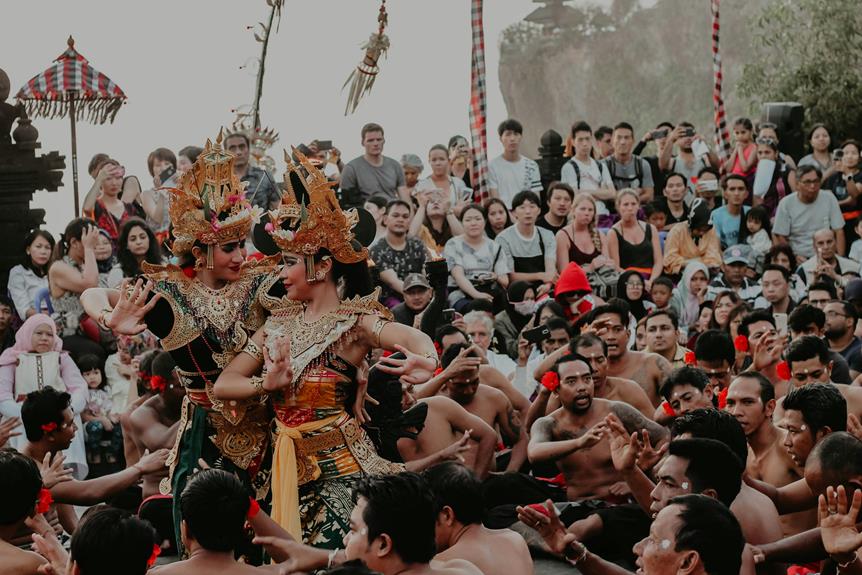
Watching a Kecak and Fire Dance performance in Bali is a captivating experience that immerses you in the island’s rich cultural and spiritual traditions. To fully enjoy the performance and ensure you’re comfortable throughout the evening, it’s important to be well-prepared. Here’s a guide on what to bring when you’re planning to watch the Kecak dance, so you can focus on the mesmerizing performance without any distractions.
Comfortable Clothing
Bali’s tropical climate means that temperatures can remain warm well into the evening, even after the sun sets. When attending a Kecak performance, it’s important to wear comfortable, lightweight clothing that will keep you cool.
- Light and Breathable Fabrics: Choose clothes made from natural fabrics like cotton or linen, which are breathable and help keep you cool in the humid climate. A light shirt or blouse paired with shorts or a skirt is ideal.
- Modest Attire: Since the Kecak dance often takes place at sacred sites like temples, it’s respectful to dress modestly. While shorts and sleeveless tops are usually acceptable, ensure that your clothing covers your shoulders and knees. If you’re visiting a temple, you may be required to wear a sarong and sash, which are often provided at the entrance.
- A Light Jacket or Shawl: Although Bali is generally warm, the temperature can drop slightly in the evening, especially if you’re near the coast. Bringing a light jacket or shawl will keep you comfortable if it gets a bit chilly.
Insect Repellent
As with any outdoor event in Bali, it’s a good idea to protect yourself from mosquitoes and other insects, especially since the Kecak dance typically takes place in the evening when mosquitoes are more active.
- Insect Repellent: Pack a small bottle of insect repellent to apply before the performance begins. Look for a repellent that contains DEET or other effective ingredients to ensure maximum protection.
- Insect-Repellent Wipes: If you prefer not to carry a bottle of liquid repellent, consider bringing insect-repellent wipes. These are easy to apply and can be conveniently stored in your bag.
Sitting Comfort
The seating arrangements at Kecak dance performances can vary depending on the venue. In some cases, you may be seated on wooden benches or on the ground, so it’s important to be prepared for different seating conditions.
- Cushion or Foldable Seat: If you know that the seating might be on the ground or on hard surfaces, consider bringing a small cushion or a foldable seat for added comfort. These are especially useful if you’re attending a performance at a temple or an outdoor venue with minimal seating arrangements.
- Sarong or Towel: If you don’t have a cushion, a sarong or a small towel can double as a seating mat. Simply fold it and place it under you for some extra padding.
Water and Snacks
Although most venues have vendors selling drinks and snacks, it’s always a good idea to bring your own water bottle to stay hydrated during the performance.
- Reusable Water Bottle: A reusable water bottle is an eco-friendly option to ensure you stay hydrated throughout the evening. Fill it up before you head to the venue, especially if you’re visiting a more remote location.
- Light Snacks: If you anticipate getting hungry, pack some light snacks like fruit, nuts, or granola bars. However, be mindful of the venue’s rules regarding outside food, as some places may have restrictions.
Camera or Smartphone
The Kecak and Fire Dance is a visually stunning performance, and you’ll likely want to capture some memories of the event. While most venues allow photography, it’s important to be respectful and mindful of others.
- Camera or Smartphone: Bring a camera or smartphone with a good camera to capture the highlights of the performance. A smartphone is often sufficient, and it’s less obtrusive than a larger camera setup.
- Silent Mode: If you’re using your smartphone or camera, make sure it’s set to silent mode to avoid disturbing the performance and other attendees.
- Battery Backup: If you plan on taking a lot of photos or videos, consider bringing a portable battery charger to ensure your device doesn’t run out of power during the performance.
Cash
While Bali is becoming increasingly cashless, some traditional venues, especially in more remote areas, may still prefer cash payments for entry tickets, snacks, or souvenirs.
- Small Bills: Bring small denominations of cash, as vendors may not always have change for larger bills. This is especially useful if you’re buying souvenirs, snacks, or tipping performers.
Respect for Cultural Norms
Attending a Kecak and Fire Dance is not just a form of entertainment; it’s also a cultural and spiritual experience. It’s important to be mindful of the local customs and to show respect for the performers and the setting.
- Sarong and Sash: If you’re attending a performance at a temple, you’ll likely be required to wear a sarong and sash as a sign of respect. Some venues provide these at the entrance, but you can also bring your own.
- Quiet and Focused Attention: During the performance, it’s important to remain quiet and attentive. Avoid talking or making noise that could disrupt the atmosphere or distract the performers.
- Dispose of Trash Properly: If you bring snacks or drinks, make sure to dispose of any trash properly. Many venues have designated trash bins, and it’s important to keep the area clean and respectful.
Sun Protection (If Attending an Early Performance)
If you’re attending a Kecak dance performance that starts in the late afternoon before the sun sets, you may need to bring some sun protection.
- Sunscreen: Apply sunscreen before arriving at the venue to protect your skin from the sun’s rays, especially if the performance begins while it’s still daylight.
- Hat and Sunglasses: A wide-brimmed hat and sunglasses will help protect your face and eyes from the sun, keeping you comfortable as you watch the performance.
Optional: A Guidebook or Program
Some visitors like to have a deeper understanding of the story behind the Kecak and Fire Dance. If this interests you, consider bringing along a guidebook or purchasing a program at the venue.
- Guidebook: A guidebook on Balinese culture and the Ramayana can provide valuable context and enhance your appreciation of the performance.
- Performance Program: Some venues offer programs that outline the story being depicted and introduce the characters. This can be helpful in following the narrative, especially if you’re not familiar with the Ramayana.
7. How to Access Uluwatu Temple and the Kecak Dance Show?
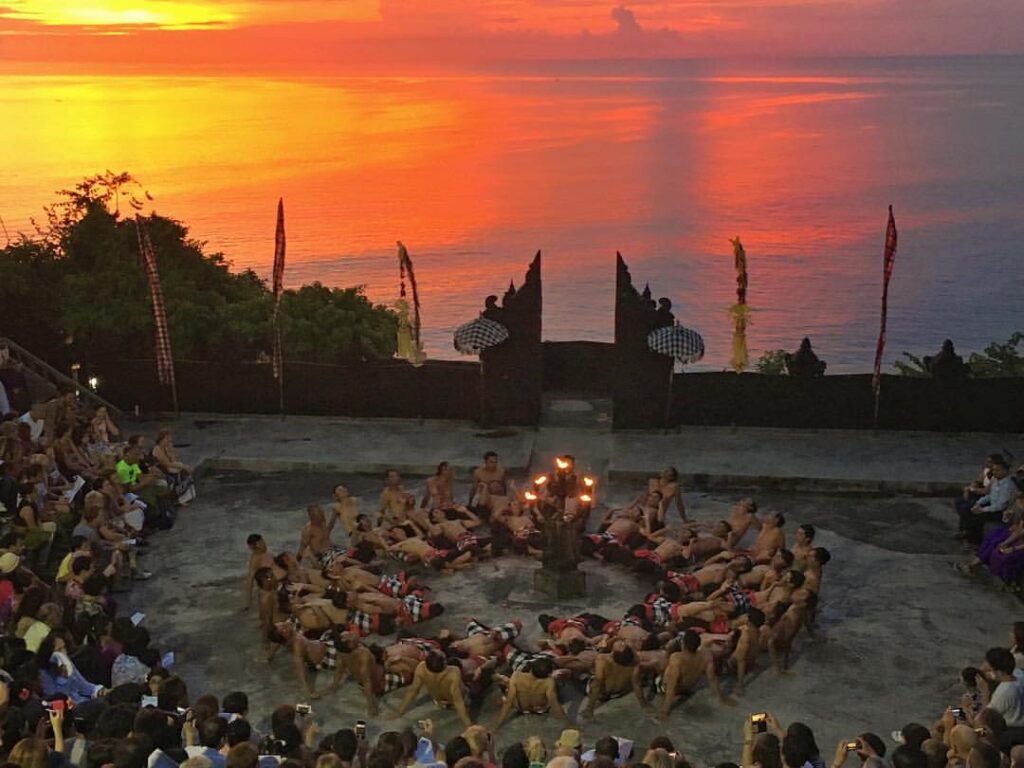
Uluwatu Temple, perched on a dramatic cliff overlooking the Indian Ocean, is one of Bali’s most iconic cultural landmarks. Known locally as Pura Luhur Uluwatu, this ancient sea temple is not only a place of deep spiritual significance but also a popular destination for tourists who come to witness its stunning sunset views and the mesmerizing Kecak and Fire Dance performance. If you’re planning to visit Uluwatu Temple and attend the Kecak dance show, here’s a complete guide on how to access the site, what to expect, and tips to make the most of your experience.
Location of Uluwatu Temple
Uluwatu Temple is located on the southwestern tip of the Bukit Peninsula in Bali, approximately 25 kilometers south of Kuta and around 30 kilometers from Bali’s capital city, Denpasar. The temple is set on a steep cliff about 70 meters above the Indian Ocean, offering breathtaking views, especially at sunset.
Getting to Uluwatu Temple
There are several ways to reach Uluwatu Temple, depending on your location and preferred mode of transport.
- By Car or Scooter: The most convenient way to reach Uluwatu Temple is by renting a car or scooter. If you’re comfortable driving in Bali, renting a scooter is a cost-effective option, especially for solo travelers or couples. A car rental or hiring a private driver is recommended if you’re traveling with a group or prefer more comfort. The drive from Kuta, Seminyak, or Denpasar typically takes about 45 minutes to an hour, depending on traffic.
- Taxi or Ride-Hailing Services: Taxis and ride-hailing services like Grab and Gojek are widely available in Bali and can take you directly to Uluwatu Temple. These services are convenient, but fares may vary depending on the time of day and traffic conditions. It’s a good idea to check the fare estimate before booking your ride.
- Tour Packages: Many tour operators in Bali offer half-day or full-day tours that include a visit to Uluwatu Temple, the Kecak dance performance, and other nearby attractions like the beaches of the Bukit Peninsula. These tours often include transportation, entrance fees, and a guide, making them a hassle-free option for travelers who prefer organized trips.
Entrance to Uluwatu Temple
Upon arrival at Uluwatu Temple, you’ll need to purchase an entrance ticket to enter the temple grounds. The ticket prices are as follows:
- Adult Entrance Fee: IDR 50,000 (approximately USD 3.50)
- Child Entrance Fee: IDR 30,000 (approximately USD 2.10)
The entrance fee grants you access to the temple grounds, including the stunning cliffside views and walking paths around the temple. Uluwatu Temple is a sacred site, so visitors are required to dress modestly. Sarongs and sashes are provided at the entrance and must be worn by all visitors as a sign of respect.
Exploring Uluwatu Temple
Once inside, you can explore the temple grounds at your own pace. The temple itself is a relatively small structure, but its location on the cliff edge makes it one of the most dramatic and picturesque temples in Bali.
- The Cliffside Walk: One of the highlights of visiting Uluwatu Temple is the cliffside walk that offers panoramic views of the Indian Ocean. The path stretches along the edge of the cliff, providing stunning vistas, especially during sunset. Be sure to bring your camera to capture the breathtaking scenery.
- The Monkeys: Uluwatu Temple is home to a population of macaque monkeys, which are considered sacred in Balinese culture. While the monkeys are a popular attraction, they are known for being mischievous and may try to snatch belongings like sunglasses, hats, or even phones. It’s important to keep your belongings secure and avoid feeding or interacting with the monkeys.
The Kecak and Fire Dance Show
The Kecak and Fire Dance performance at Uluwatu Temple is one of the most popular cultural shows in Bali. The performance takes place daily at sunset, adding to the magical atmosphere of the event.
- Show Time: The Kecak dance performance usually starts around 6:00 PM, just before sunset, and lasts for approximately one hour. It’s recommended to arrive early to secure a good seat, as the amphitheater can fill up quickly, especially during peak tourist season.
- Ticket Price: The ticket price for the Kecak and Fire Dance is separate from the temple entrance fee. As of the latest update, the price for the Kecak dance show is around IDR 150,000 per person (approximately USD 10). Tickets can be purchased at the temple’s ticket booth, located near the entrance to the amphitheater.
- The Performance: The Kecak dance is a unique Balinese performance that features a large group of male dancers sitting in a circle, chanting “cak-cak-cak” in unison, creating a rhythmic and hypnotic sound. The dance reenacts scenes from the Ramayana, an ancient Hindu epic, focusing on the story of Prince Rama, his wife Sita, and the monkey god Hanuman. The performance culminates in the Fire Dance, where the character of Hanuman performs a daring act with burning coconut husks, symbolizing the triumph of good over evil.
- The Setting: The open-air amphitheater where the Kecak dance is performed is perched on the cliff, offering spectacular views of the sunset over the ocean. As the sun sets, the sky changes colors, providing a stunning backdrop for the performance.
7. Conclusion
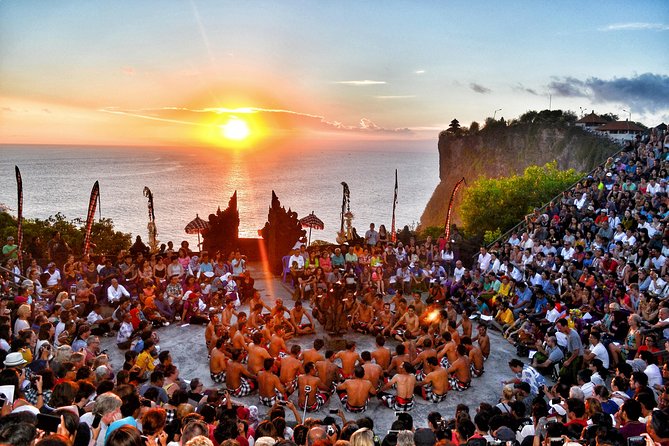
The Kecak and Fire Dance is more than just a cultural performance; it is a powerful expression of Bali’s spiritual and artistic heritage. Through its hypnotic chants, dynamic movements, and dramatic storytelling, the dance encapsulates the essence of Balinese culture—its devotion to the gods, its communal harmony, and its celebration of the triumph of good over evil.
For visitors to Bali, experiencing the Kecak and Fire Dance is a way to connect with the island’s rich cultural traditions and to gain a deeper appreciation for the spiritual and artistic values that continue to shape Balinese life. Whether watched at a cliffside temple at sunset or in a traditional village setting, the Kecak and Fire Dance offers a glimpse into the soul of Bali and leaves a lasting impression on all who witness it.










Leave a Review